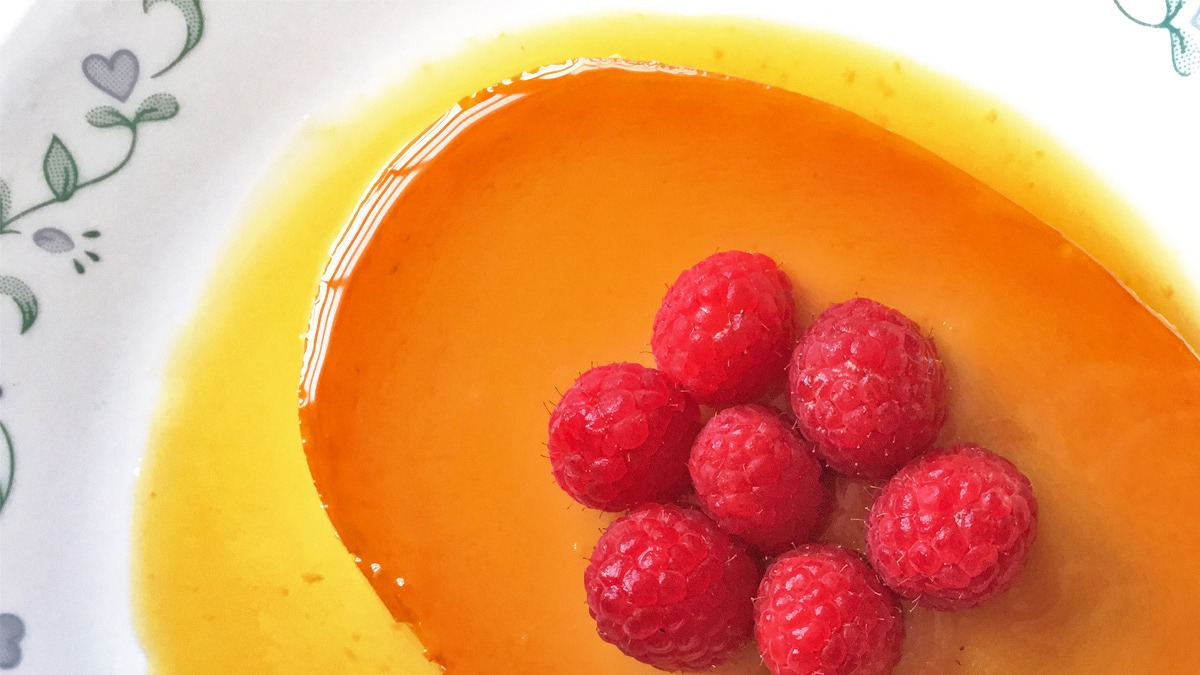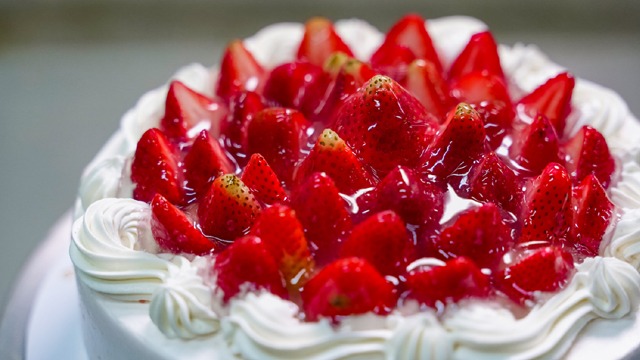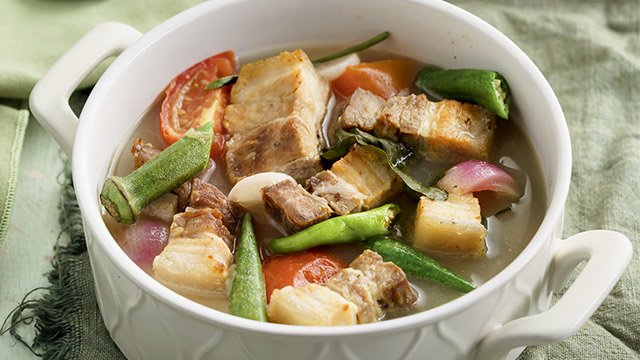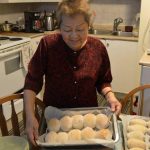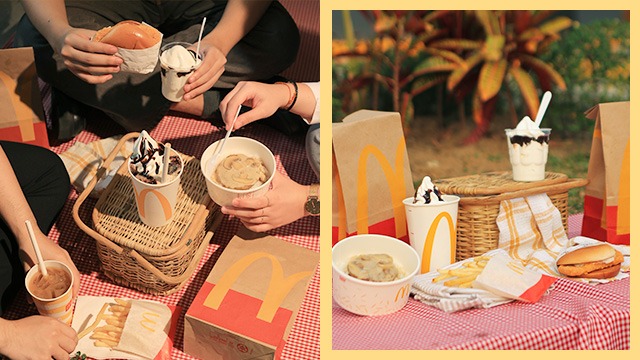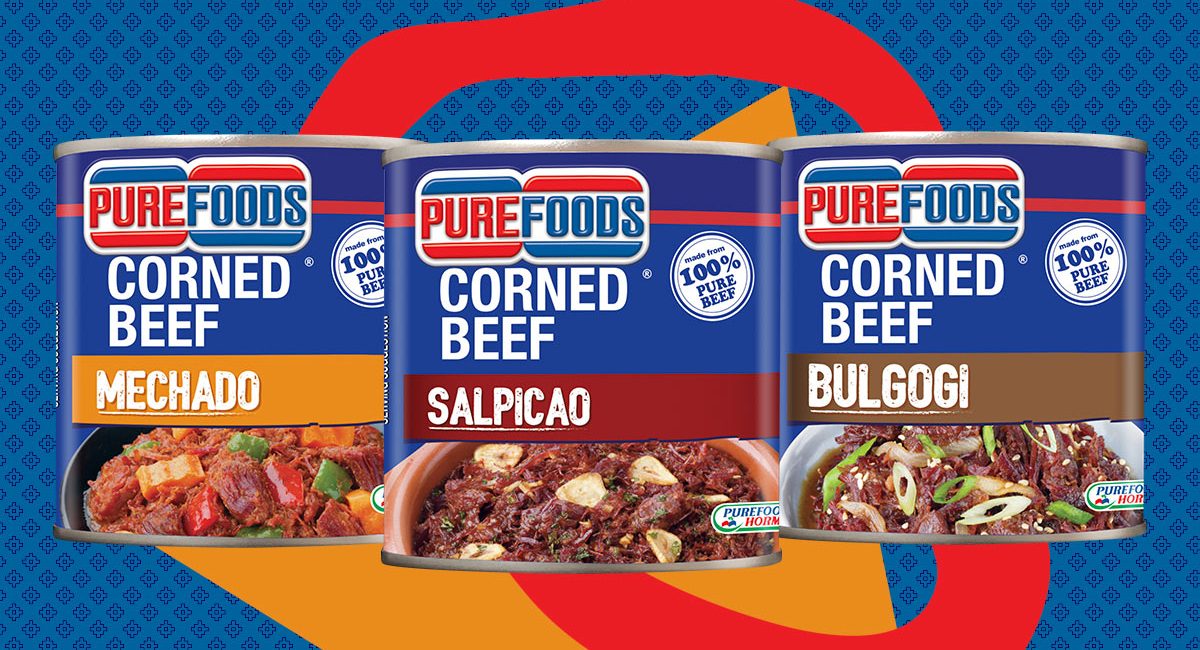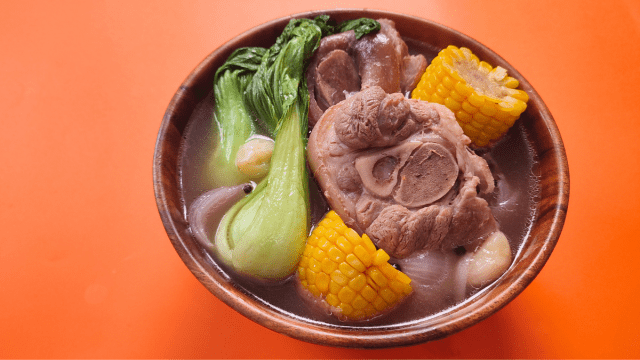For this young Fil-Am chef in New York, home is a set of sensations, of familiar aromas, nostalgic textures, and of specific flavors.
Soy sauce, vinegar, and garlic—these three pillars make adobo so delicious but also so pungent. Opening my Tupperware of adobo released its strong aroma that wafted and swirled all around me. I stuck out like a sore thumb among my friends, whose school-provided lunches were bland nuggets or pre-made hamburgers. As my spoon and fork clanged as quietly as it could, my friends couldn’t help but stare. I couldn’t help but be embarrassed. Being the new girl in school was embarrassing enough.
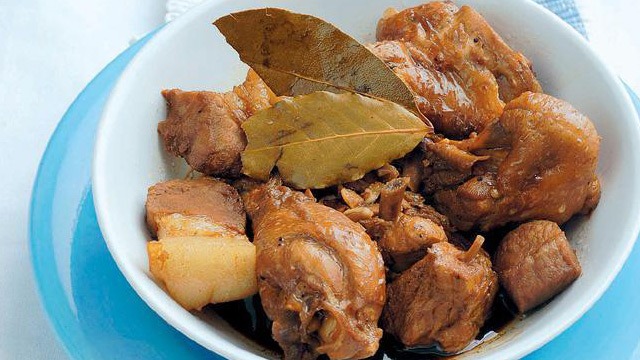
But could I give up adobo?
The night before, my dad had cooked adobo and I’d packed the leftovers myself. I couldn’t bring myself to regret it, not when every bite kept getting better. My dad’s always been a great home cook.
Before dad had joined us in New York, it was just my two sisters, my mom, and I. I’d asked dad for recipes, and I did my best, but I was only 11 years old. You can only do so much at 11. There were no packed lunches before dad arrived. For months, I sucked it up and ate plain cafeteria food. It was jarring for my young self. I used to be spoiled with delicious food all the time.
My adobo, even with all the curious looks going my way, my adobo was leagues better than what they were eating. My adobo was so much better than what my school had to offer that I chose to get tutoring lessons every lunchtime so I could eat my rice and adobo in a relatively secluded classroom, where I could escape the gawking.
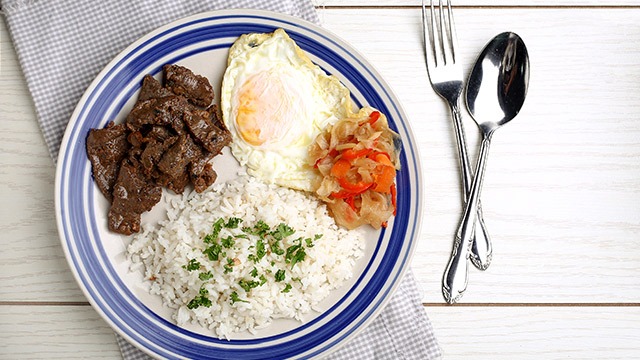
Recommended Videos
In the Philippines, I’d wake up to the smell—not of coffee—but of garlic being tossed into hot oil, dispersing that distinct, delicious aroma, and beginning a delicious symphony with that low crackling: shhh… That was my morning alarm, and it put me in a productive mood immediately. It was either my lola, my father, or my yaya by the stove preparing me a classic tapsilog or longsilog breakfast. When I left the Philippines, I left breakfast behind. I skipped it altogether and headed straight to school.
I learned that breakfast was just one of those things that had to take a backseat.
I learned that breakfast was just one of those things that had to take a backseat. My sisters and I, without a yaya for the first time in our lives, had to do all the chores: cooking, dishwashing, setting the table, doing laundry, and beyond. Through that rough adjustment period, what really helped me was that I actually got to enjoy one chore in particular: cooking.
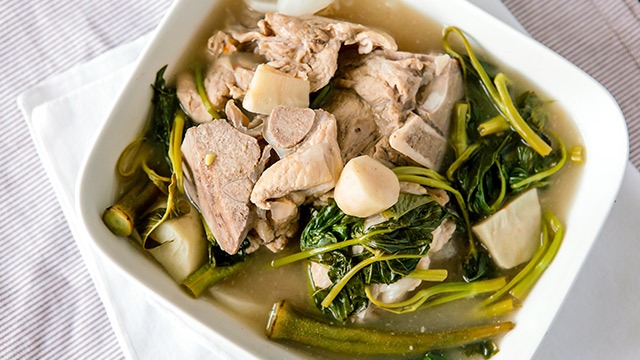
Cooking was our medicine for homesickness. So, I called up my dad for our family recipes: kaldereta, nilaga, and sinigang to name a few. The sinigang in particular had to be the kind made of pork neck bones and soured with Mama Sita’s sinigang mix—it was my mother’s favorite sinigang recipe, my dad’s. That good, comforting bowl of hot and sour sinigang got us through some cold New York winters.
My mom wasn’t much of a cook, lovely as she was. For years, working in New York on her own, she hadn’t had home-cooked meals. It made the stuff I cooked even more special. I can still remember that smile of hers I love so much, the joy sparkling in her eyes whenever she got to eat a home-cooked Filipino meal again.
How long had it been for her?
About a year after my sister and I moved to New York, my mother passed away. Years ago, she was diagnosed with breast cancer. She survived that first fight, but within the year we moved in with her, the cancer came back even worse. Maybe it was God’s perfect timing that we at least got to be with her. In that short time, she taught us the value of hard work and never taking anything from granted. In spite of the pain entwined in those memories, we couldn’t help but feel grateful. We’d been allowed to be with her. I was able to cook for my mom.
I was able to cook for my mom.
There is not a day that goes by where I don’t think of her, and how much I wanted to spend more time exploring life with her, baking the things that she liked the most. However brief that time we had, our memories are seared into my heart, so much so, that it’s rippled to the rest of my life.
All the joy and comfort generated by every bowl of Filipino food I’d mustered in that time of my life set a fire in me. My father made my sisters and I realized that food wasn’t just about sustenance—it was about warmth, comfort, love, and bringing people together. These values have always been core to our family.

Growing up, I got to see first-hand just how much cooking meant to my family. For every birthday or holiday, my dad and my titas would come together not just to eat together, but to cook together. It wasn’t just the feasting that brought them joy; it was also the process of making that feast happen. From our kitchen came out delicious large platters of kaldereta, pancit, palabok, lumpia, and leche flan! More than the delicious dishes, though, somewhere in the tight intense heat of our kitchen, something else was cooking: bonds brewed, formed, and solidified.

I have very few memories with my mom as a child, I was almost too young when she left for New York. But I do have memories of her and holidays. My mom would thoroughly clean and decorate the house, choose our outfits to church but what I remember most were here desserts. That one has stayed so clear in my mind that I can almost taste it in my mouth today. My mom didn’t really cook, but she did for special occasions. She didn’t just cook, she baked something unforgettable: the great banana cake she learned from her sister. The cake was soft, fluffy and made even better with the delicious, sticky, sweet, dulce de leche.

When my father moved to New York with us, he brought back this culture of handaan back into our lives. In that era when we felt we were thrown into an ocean, those feasts felt like a life vest. It reminded us of what we held dear; good food and family.
As we gathered around our buffet tables, eating like no tomorrow, we found our joy again.
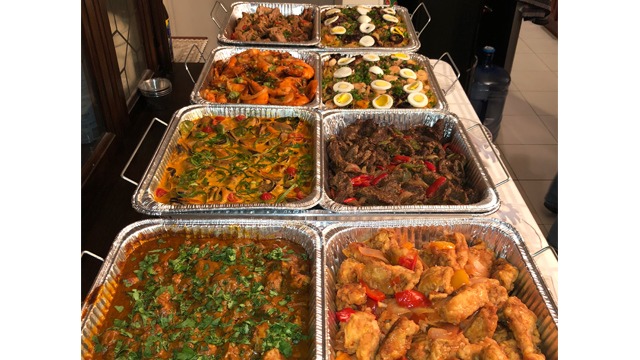
We marked all our holidays with food that made us feel like home. Even during American holidays such as Thanksgiving, the turkey and gravy never took centerstage. Instead, we basked in the plethora of authentic Filipino dishes such as sweet-styled spaghetti, chop suey, halabos na hipon, mechado and fish escabeche. As we gathered around our buffet tables, eating like no tomorrow, we found our joy again.
The profound joy we had in part thanks to food, trickled down to our friends. My dad cooks almost every day so we’ve always got enough for a miniature feast in our fridge. Friends and family who visit get to raid a bounty of kare-kare, chicken adobo, mechado, or pork binagoongan. My dad felt like he was feeding three grown men instead of three daughters.
One day I decided to take the handaan experience up a notch. For one of my birthdays, I invited my friends to my house. My dad woke up early in the morning and began cooking to his heart’s content. My sisters cut up big trash bags and placed them across our long table. Next, were the banana leaves, then the rice, the grilled meats, the ensaladas, and the cornucopia of fresh seafood. For my birthday, we set up one glorious, memorable, delicious, kamayan aka boodle fight.
Even friends who were reluctant to ditch their utensils got into it.
I never knew how fun and exhilarating it would be since I never experienced it before. We had buttery halabos na hipon, tender grilled liempo, steamed lobsters straight from the Maine, pleasantly tender, spicy pork binagoongan, simple tortang talong, scrumptious fried pompano, crunchy bagoong chicken wings, silky pancit bihon, umami-packed salted egg salad, flavorful crabs, juicy pinakbet, and crispy lechon kawali all laid our before us.

I was mind blown. It was a beautiful, hot mess as we all ate on one table and spent hours of just eating and laughing. Even friends who were reluctant to ditch their utensils got into it. Later, those trash bags laid out under the banana leaves were simply folded and thrown out. It was perfect from beginning to end. Of course, we’re going to do it again this year.
But my food story doesn’t end
there.
In college, I found myself shifting four times. I was never satisfied with what I was learning. I knew where I had to go but going to culinary school had a hefty price tag. It didn’t help that I lived in New York City, home to the most diverse cuisines, and to be living with my father who day in and day out cooked delicious meals. I couldn’t deny my heart anymore. I really wanted nothing more than to cook and be surrounded by food. After college, I just couldn’t shrug off that itch. I had to. I dove in.

I pursued my dream to study culinary arts at the Institute of Culinary Education (ICE), one of the top culinary schools in the world. I went from cooking on my days off and trying as many restaurants I could, to working in the intensity and heat of a professional kitchen. It was one of the best decisions I’ve ever made as all my experiences there, working with renowned chefs Tom Colicchio and Abbey De La Rosa has made me into a better chef.

When I returned to the Philippines in 2015, my titas, of course, set up a handaan. The one dish that stuck with me was the most was the velvety smooth and satisfyingly sweet leche flan. The same kind that I used to eat when I was young. Seeing my giddiness to learn it, my tita eagerly shared her recipe.
I took that recipe to New York City. My sisters brought the flans I made to their job and instantly, orders began arriving. Filipinos at work loved it the most. It was more than just a treat to them, it tasted as sweet as their memories. It brought them nostalgia, comfort, and happiness.
This 2019, I’m going back to the Philippines again. This time, I have a mission. It’s not just about going home, but seeing more about the Filipino home, this time, beyond my familiar comfort zone, out on the islands, exploring regional cuisines. More than tasting all the goodness the islands have to offer, I want to get knee deep in traditions, culture, and history. When I’ve absorbed, eaten, relished in as much as I can, I’m bringing it all back with me to New York.

One day, I hope to be as successful and join the ranks of Filipino chefs in New York like Tom Cunanan, Aileen Payumo, Monica Mendiola, and Dale Talde. My goal is to set up my own restaurant where fellow New Yorkers will stumble into and find a different kind of home. Or, where fellow Filipinos will find the home they’ve been yearning for, just like I did many years ago when my dad came to New York and cooked delicious Filipino dishes like adobo to pack for lunch. Home is the memory of my mom’s dulce de leche glazed fluffy banana cake. Home is my ninang Nene’s velvety sweet leche flan.
Through my experiences, I found that for me, home isn’t particularly a geographical location, but rather a set of sensations, of familiar aromas, nostalgic textures, and of specific flavors.
Through my experiences, I found that for me, home isn’t particularly a geographical location, but rather a set of sensations, of familiar aromas, nostalgic textures, and of specific flavors. To me, home, the kind that fills you with love, security, comfort, and happiness, is a taste.
Written by Jasper Castro as told by Regina Onal.

